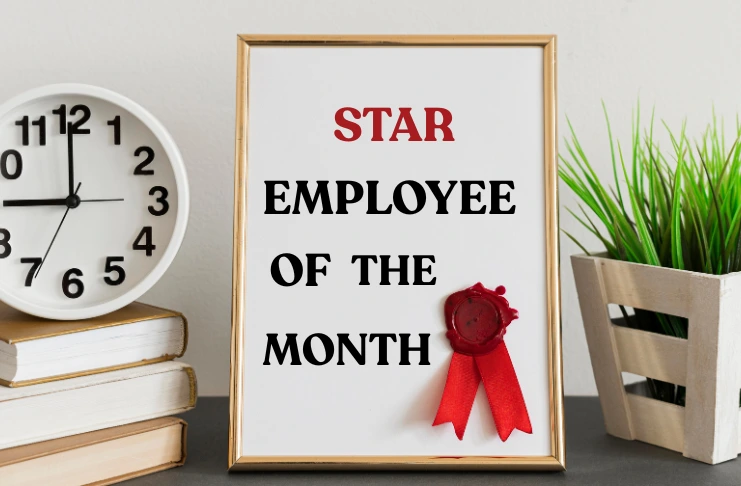In the fast-paced world of the restaurant industry, maintaining a motivated and efficient team is crucial for delivering exceptional customer service and driving sales. Implementing effective incentives for your staff can significantly boost employee morale, reduce turnover, and enhance overall performance.
The demanding nature of restaurant work creates unique challenges for employee retention. Long hours, weekend shifts, and high-pressure environments can quickly lead to burnout if not balanced with meaningful recognition and rewards. Strategic employee incentives and restaurant staff incentives serve as powerful tools for acknowledging hard work, encouraging excellence, and fostering a culture where staff feel genuinely valued.
Successful restaurants recognize that incentives must go beyond occasional bonuses. Effective programs integrate seamlessly into daily operations, creating continuous motivation rather than temporary spikes in performance. From performance-based financial rewards to career development opportunities and other employee incentive programs, thoughtful incentives address both the immediate needs and long-term aspirations of restaurant professionals.
In an industry defined by its people, strategic investment in staff motivation through thoughtfully designed incentive programs represents one of the most powerful competitive advantages available to restaurant businesses today.
This blog will explore various restaurant staff incentive ideas, with which you can boost your staff’s motivation and have an efficient team.
Importance of Restaurant Staff Incentives

The restaurant industry has long been plagued by one persistent issue: high employee turnover. This challenge, already a defining characteristic of the hospitality sector, was further exacerbated in the aftermath of the COVID-19 pandemic. According to Perfect Check, turnover rates in hospitality have recently hovered around 75%, indicating that for every four employees hired, three leave within a year. Such staggering attrition rates are more than just HR statistics—they represent real financial losses, operational instability, and compromised service quality.
However, the impact of high turnover extends beyond dollars and cents. One of the less tangible yet equally important consequences is the erosion of team morale and workplace culture. Employees who see their coworkers leave regularly may feel uncertain about their own future or disconnected from the team. In such environments, it becomes difficult to foster collaboration, accountability, or a shared sense of purpose. This instability is also reflected in the customer experience—guests who frequent a restaurant tend to value familiar faces and consistent service, which is important when employees feel valued and committed.
This is where restaurant staff incentives become not just beneficial but essential. Offering meaningful incentives such as performance-based bonuses, career development pathways, and work-life balance perks addresses the very root causes of turnover: lack of recognition, stagnant growth, and burnout. These incentives help transform jobs into careers and workplaces into communities. When employees feel seen, supported, and rewarded for their contributions, they are far more likely to stay, engage, and perform at higher levels.
For example, a restaurant that provides regular training sessions, acknowledges high performers publicly, and allows flexible scheduling not only retains staff but also empowers them to take ownership of their roles. When businesses invest in programs to engage employees, empowered staff are more confident, more efficient, and more enthusiastic—qualities that directly enhance the customer experience. Happy employees tend to create happy guests, and in a service-driven industry like food and hospitality, that can be a key differentiator in a competitive market.
Additionally, businesses with strong incentive programs often see higher employee referrals, leading to better-quality hires. When staff are satisfied, they become brand ambassadors, promoting the restaurant as a great place to work. This reduces the time and cost spent on external recruitment and brings in individuals who are more likely to fit well with the team culture.
Incentives also provide a framework for performance alignment, helping staff understand how their daily efforts tie into broader business goals. Whether it’s upselling specials, managing food waste, or turning tables efficiently, employees are more likely to engage with these objectives when there’s a transparent system of rewards in place.
In summary, implementing effective staff incentives is not a luxury—it’s a strategic necessity. An effective employee incentive program addresses the root issues of high turnover, enhances employee satisfaction, and improves operational efficiency. More importantly, they cultivate a loyal, motivated team that is aligned with the restaurant’s vision and values. As the industry continues to evolve post-pandemic, restaurants that prioritize their people will be the ones that stand out—not just for what’s on the menu but for the experience they deliver from the inside out.
Types of Staff Incentives in a Restaurant

There are various types of rewards or incentives that restaurant owners can implement, like financial incentives, recognition programs that evaluate employees and appreciate their work by rewarding them, and professional development incentives where employees are promoted based on their skills, abilities, and past performance. Beyond monetary rewards and recognition, there are many other incentives that boost employee motivation and enhance a restaurant’s performance.
When implemented thoughtfully, staff incentives create a virtuous cycle that benefits every aspect of operations. Motivated employees deliver superior service, enhancing the guest experience and driving repeat business. Improved retention reduces costly turnover and training expenses, while engaged team members contribute innovative ideas that can distinguish the restaurant in a competitive market.
1. Financial Incentives
In a fast-paced and highly competitive industry like food service, financial incentives remain one of the most effective tools for motivating restaurant staff. When employees see a direct correlation between their performance and their paycheck, they’re more likely to go the extra mile. From performance bonuses to innovative tip-sharing models, financial rewards not only improve productivity but also help attract and retain top talent. Implementing these financial employee incentives systems can strategically create a high-performance culture and drive long-term business success.
1.1. Performance-based compensation
Offering bonuses tied to individual or team performance can motivate staff to exceed targets. For example, STK Steakhouse offers managers up to 15% of their base salary in bonus opportunities, with base salaries ranging from $65,000 to $75,000. These bonuses are often tied to key performance indicators such as labor costs and cost of goods sold (COGS), aligning managerial efforts with the financial and operational goals of the establishment.
Additionally, a report by Pizza Today highlights that general managers can receive bonuses adding up to 25% of their annual salary. These bonuses are often linked to profit-driving metrics like sales, food, and labor costs, as well as other performance indicators such as service-level inspections and customer reviews.
1.2. Tip Matching Programs
Tip-matching programs are a creative way to enhance employee earnings while encouraging consistently high service standards. In this model, the restaurant commits to matching a set percentage of the tips employees earn during specific periods—such as peak hours, holidays, or team performance weeks. For instance, a restaurant might match 20% of tips earned on a weekend shift, adding a bonus layer of financial motivation.
This system not only rewards employees for their attentiveness and hospitality but also signals the employer’s appreciation for service excellence. Tip matching can be especially effective in motivating front-of-house staff to upsell, improve table turnover efficiency, and offer exceptional guest experiences. When implemented well, it becomes a win-win—celebrating employee achievements, employees boost their income, and the restaurant sees better reviews, repeat business, and increased ticket sizes.
1.3. Profit-Sharing Plans
Profit-sharing transforms team members into stakeholders. By distributing a portion of the restaurant’s profits among employees—either quarterly, semi-annually, or annually—owners can instill a powerful sense of ownership and collective responsibility. This model encourages every employee, from kitchen staff to servers, to think like a business partner and focus on cost-efficiency, customer satisfaction, and team synergy.
A well-structured profit-sharing plan not only drives alignment with business objectives but also helps reduce turnover by incentivizing long-term loyalty. When employees know they directly benefit from the restaurant’s success, they are more likely to invest emotionally and professionally in the outcome. For smaller establishments, even modest profit-sharing contributions can make a meaningful impact on team morale and overall performance.
When implemented wisely, financial incentives drive motivation, performance, and long-term employee loyalty.
2. Recognition Programs
Recognition is a powerful driver of employee engagement and satisfaction. When team members feel seen and appreciated for their hard work, they are more likely to stay committed and perform at their best. Implementing structured recognition programs can significantly improve morale and foster a culture of mutual respect and motivation.
2.1. Employee of the Month Awards
Implementing an “Employee of the Month” program is one of the most accessible and effective ways to motivate your team. Recognizing outstanding employees on a monthly basis—with tangible rewards such as gift cards, featured nameplates, preferred parking spots, or even a premium meal—sends a clear message that exceptional work doesn’t go unnoticed. This not only boosts individual morale but also sets a performance benchmark for the rest of the staff. When consistently implemented, such programs can foster healthy competition, drive consistent effort, and reinforce a culture of appreciation across the workplace.
2.2. Peer Recognition Systems
While managerial recognition is important, peer acknowledgment adds another meaningful layer. Creating a structured system where employees can recognize each other—such as through weekly shout-outs, bulletin boards, or a digital kudos platform—promotes mutual respect and camaraderie. Peer recognition fosters a more cohesive and collaborative work environment, and it empowers employees to appreciate the contributions of their teammates. Over time, this cultivates a positive team dynamic where individuals feel supported not only by management but also by their peers.
A culture of recognition cultivates pride, engagement, and a deep sense of belonging within your team.
3. Professional Development
Professional development incentives signal to employees that you’re invested in their future—not just their present performance. Offering learning and growth opportunities increases job satisfaction, enhances skill levels, and contributes to long-term retention and internal mobility.
3.1. Training and Certification Opportunities
Providing access to training programs and covering certification costs not only enhances employees’ skills but also demonstrates a commitment to their professional growth. This approach can lead to a 20% increase in job performance and satisfaction.
3.2. Clear Promotion Pathways
Ambition thrives in environments with clarity and direction. Creating well-defined promotion pathways helps employees see their future with your organization. This includes outlining roles, responsibilities, required qualifications, and performance benchmarks for advancement. Regular check-ins, development plans, and internal job postings reinforce the idea that upward mobility is possible. Employees who know they can grow within your establishment are more likely to remain loyal, committed, and engaged in their current positions.
3.3. Tuition Reimbursement Programs
Education can be a life-changing opportunity, and when employers support it, they make a lasting impact. Offering partial or full tuition reimbursement for hospitality management courses, business degrees, or related fields encourages employees to pursue academic growth while still contributing to your restaurant. This creates a win-win scenario: when employees benefit and gain valuable knowledge, your business benefits from their enhanced competencies and loyalty. It also signals a forward-thinking, employee-centered culture.
Investing in employee growth strengthens retention, enhances skill sets, and empowers your team to evolve with your business.
4. Work-Life Balance
The restaurant industry is known for its demanding pace, so helping employees maintain a healthy work-life balance is vital. Flexible policies and wellness support not only improve morale but also reduce absenteeism and turnover, leading to a more resilient and loyal workforce.
4.1. Flexible Scheduling
In the demanding hospitality industry, scheduling flexibility can be a major differentiator in employee satisfaction. Allowing staff to request preferred shifts, trade schedules, or adjust hours to accommodate personal obligations (such as childcare or education) increases their ability to manage work-life balance. Flexible scheduling reduces burnout and absenteeism while increasing long-term commitment. Utilizing scheduling software or shift-swapping apps can make this process seamless for both managers and staff.
4.2. Paid Time Off and Mental Health Days
Providing paid time off, including designated mental health days, shows employees that their well-being matters. Encouraging rest and recovery not only helps prevent burnout but also builds a stronger emotional connection to the workplace. Employees who feel their health is valued are more likely to maintain productivity, show up consistently, and foster a positive work culture. Restaurants that normalize conversations about mental health and offer structured leave policies set themselves apart as supportive, inclusive employers.
4.3. Health and Wellness Initiatives
A truly balanced work-life approach includes physical and mental health resources. Implementing wellness initiatives—such as gym memberships, wellness stipends, guided meditation sessions, healthy meal options during shifts, or team fitness challenges—helps reduce stress and improve overall morale. These initiatives don’t have to be expensive; even small gestures like weekly wellness tips or hydration stations contribute to a culture of care. When employees feel supported holistically, they’re more engaged and productive.
Supporting work-life harmony helps build a resilient, energized workforce that thrives under pressure.
5. Team Building
Strong teams aren’t built by accident—they’re built through intentional experiences that foster connection and collaboration. Team-building initiatives create a sense of belonging and improve cooperation during service, directly impacting customer satisfaction and operational efficiency.
5.1. Social Events and Outings
Creating opportunities for your team to bond outside of the traditional work environment can significantly strengthen relationships and foster a sense of community. Whether it’s a group dinner, bowling night, holiday celebration, or a fun team-building retreat, these shared experiences help bridge communication gaps and build trust. Employees who enjoy their coworkers are more likely to collaborate effectively during service hours, leading to smoother operations and better customer interactions.
5.2. Team-Based Competitions
Gamifying workplace goals through friendly competitions can energize the team and drive performance. Examples include tracking upsell rates, customer satisfaction scores, or teamwork milestones. Offer small rewards—like a team lunch, bonus points, or gift cards—to keep the momentum going. These competitions not only increase engagement but also reinforce shared accountability, pushing teams to achieve collective goals while enjoying the process.
Intentional team-building efforts create a positive work culture where collaboration and camaraderie flourish.
6. Non-Monetary Perks
Not all incentives need to be tied to a paycheck. Sometimes, non-monetary perks can have just as much impact when they show appreciation, improve daily workflow, or enhance the overall employee experience. These perks can elevate workplace satisfaction in subtle yet powerful ways.
6.1. Staff Discounts
Offering employee discounts on food, beverages, or branded merchandise is a simple but effective way to show appreciation. These perks allow staff to experience the restaurant from a guest’s perspective, increasing their familiarity with the menu and improving their ability to recommend dishes authentically. It also builds brand loyalty and helps employees feel like valued insiders.
6.2. Technology Upgrades
Outdated systems can cause frustration and slow down workflows. Investing in upgraded technology—like digital point-of-sale (POS) systems, mobile ordering apps, or real-time kitchen management software—can significantly ease daily tasks for employees. These tools help reduce errors, streamline communication, and improve service speed, all of which contribute to greater job satisfaction. When staff have access to efficient tools, they can focus more on delivering great experiences and less on wrestling with tech glitches.
Thoughtful non-monetary perks can elevate everyday employee experiences, fostering appreciation and overall job satisfaction.
Implementing Effective Incentives: Best Practices

Having great incentive ideas is only part of the equation. To truly make an impact, you need a thoughtful and strategic implementation plan. These best practices will help ensure your efforts resonate with employees and drive the results your restaurant needs.
Assess Employee Needs
Before rolling out any incentive program, it’s crucial to understand what your employees truly value. Conduct anonymous surveys, hold team meetings, or use suggestion boxes to gather input. When employees feel heard, they’re more likely to participate in and respond positively to new initiatives.
Align Incentives with Goals
Every incentive should tie back to a business objective. Whether it’s increasing upsell rates, reducing turnover, or improving guest satisfaction, ensure that your incentives are designed to drive specific, measurable outcomes. This alignment helps build a results-oriented culture while keeping team efforts focused.
Communicate Clearly
Transparency is key to successful implementation. Clearly explain the rules, expectations, and reward structures of each incentive program. Use visual aids, team huddles, and digital platforms to make sure everyone understands how they can qualify and what they stand to gain.
Monitor and Adjust
No program should be static. Regularly review the performance and feedback surrounding your incentives. Are goals being met? Are employees engaged? Adjust based on data and staff suggestions. A flexible, responsive approach shows that you’re committed to making the system work for everyone.
INDUSTRY INSIGHTS
| There are many benefits of incentives in a workplace; for example, performance incentives boost employee motivation and improve service quality. According to a report, non-cash rewards like gift cards or free meals are preferred by 65% of employees. Proper incentives can enhance staff performance, leading to a 20% improvement in service and customer experience. Reducing turnover, which often exceeds 75% in the industry, can save costs |
Implementing a diverse range of staff incentives can lead to a more motivated, satisfied, and productive team, ultimately enhancing customer experiences and driving your restaurant’s success.
Successful Examples

In the competitive U.S. restaurant industry, effective staff incentive programs are crucial for enhancing employee motivation and retention. Here are some notable examples:
1. Uncle Julio’s Loyalty Program Boost
Uncle Julio’s, a Mexican restaurant chain, launched an innovative employee-driven loyalty program to increase customer membership. By incentivizing servers with cash bonuses and prizes for enrolling new members, the campaign resulted in approximately 2,000 new sign-ups per location, totaling 54,000 new members—a 50% increase. This initiative not only expanded the customer base but also heightened employee engagement and satisfaction.
2. White Castle’s ‘R.O.C.K. the Castle Games’
White Castle implemented the ‘R.O.C.K. the Castle Games,’ a contest measuring team performance across various categories. Employees earned points redeemable for rewards, leading to 100% quality scores and a 75% increase in program participation. This approach fostered a culture of recognition and consistent service quality.
These cases illustrate that tailored incentive programs, addressing financial needs and recognizing performance, can effectively motivate restaurant staff, leading to improved retention and operational success.
Conclusion
From creative staff incentive ideas like peer recognition, gamified challenges, and flexible scheduling to more structured sales incentive ideas such as performance bonuses and upsell competitions, the range of options for motivating restaurant staff is broad and impactful. The most effective programs are those tailored to both business goals and employee motivations. Whether it’s a family-owned diner or a multi-location chain, investing in people yields measurable returns.
Case studies from across the industry show the clear benefits: some restaurants have experienced dramatic boosts in customer engagement, retention, and service quality by implementing targeted incentives. For example, employee-driven loyalty initiatives have increased membership rates, financial flexibility tools have significantly improved staff retention, and performance-based games have elevated service standards and team morale.
In an industry where turnover can surpass 75% and where replacing even one staff member can cost thousands of dollars, incentive programs are no longer optional—they are essential. A well-designed incentive system builds a loyal, high-performing team that enhances both the customer experience and the bottom line.
Frequently Asked Questions
1. What are the top 3 employee desired incentives?
Monetary bonuses, flexible scheduling, and career development opportunities are the most desired incentives among employees. These not only address financial security but also show respect for personal time and future growth. Employees value employers who invest in their development and well-being. When these incentives are consistently applied, engagement and loyalty significantly improve.
2. How to motivate restaurant employees?
Motivating restaurant employees requires a mix of clear communication, recognition, and tangible rewards. Providing a positive work environment, opportunities for advancement, and regular feedback encourages stronger performance. Incentives tied to team or individual achievements can further boost morale. Small gestures of appreciation also go a long way in keeping spirits high.
3. What are the 4 examples of incentives?
Incentives can take many forms, but common examples include cash bonuses, extra paid time off, gift cards, and profit-sharing programs. Each appeals to different employee motivations, from financial needs to personal time. Using a variety of incentives ensures inclusivity and effectiveness. When tied to performance metrics, these rewards can significantly improve outcomes.
4. How do you incentivize kitchen staff?
Kitchen staff can be incentivized through performance bonuses for speed and quality, team-based goals, and consistent recognition for their behind-the-scenes efforts. Cross-training and promoting from within also boost motivation. Because kitchen work is high-pressure, showing appreciation matters. Providing a safe, respectful environment is itself a strong, ongoing incentive.
5. How do you reward staff for hard work?
Staff who consistently go above and beyond can be rewarded with financial bonuses, additional time off, or public recognition in front of peers. Thoughtful rewards—like handwritten notes or surprise perks—can feel especially meaningful. Aligning rewards with employee preferences ensures they feel personalized. This builds trust and strengthens long-term commitment.
6. How to incentivize your employees?
Effective employee incentives are aligned with business goals and delivered consistently. Start by understanding what motivates your team, then offer a mix of financial and non-financial rewards. Clear criteria and open communication about how to earn them create transparency. Regularly updating programs based on feedback keeps them relevant and impactful.
7. What is a staff incentive?
A staff incentive is a reward system designed to encourage desired behaviors and outcomes among employees. It can include anything from financial bonuses to flexible schedules or career growth opportunities. The goal is to align employee performance with business success. Incentives work best when they feel fair, meaningful, and achievable.
8. What are the three main incentives?
The three main types of incentives are financial, non-financial, and career-development-oriented. Financial incentives include bonuses and commissions, while non-financial ones involve recognition or perks. Career development incentives focus on training, promotions, or educational support. Together, these categories address short—and long-term employee motivation.
9. What is the most popular sales incentive?
The most popular sales incentive is the commission model, where employees earn a percentage of the revenue they generate. This system directly ties effort to earnings, which keeps motivation high. It’s especially effective in fast-paced, results-driven environments. Variations like tiered bonuses can increase excitement and performance.
10. What is an example of a salesman incentive?
A common example is a bonus structure where a salesperson earns increasing rewards as they hit higher sales targets. For instance, surpassing a $10,000 goal might yield a 5% bonus, while $20,000 earns 10%. These escalating tiers encourage sustained effort and growth. Recognition programs often complement these monetary incentives.
11. How to reward sales staff?
Sales staff respond well to a combination of commissions, performance bonuses, and public recognition. Offering exclusive perks—such as trips, extra vacation days, or team outings—also works well. Regular contests and leaderboard incentives add excitement. Personalizing rewards based on preferences boosts satisfaction and long-term loyalty.





